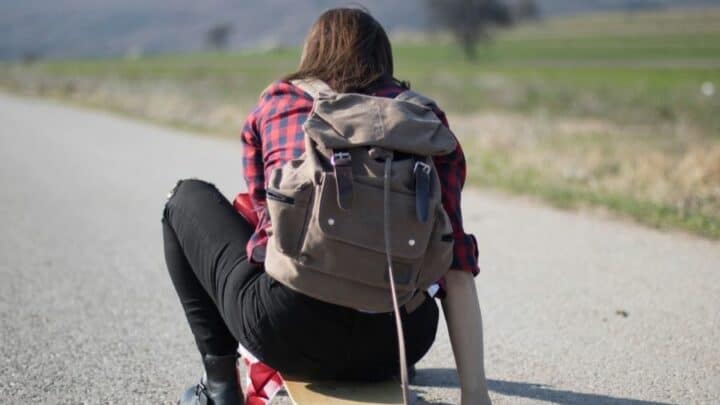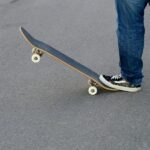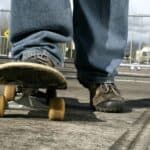Thinking of taking up skateboarding? It really is never too late to learn!
The key is practice, practice, practice if you want to be able to street skate and perform tricks with your board.
Ready to learn how to skateboard? Keep reading to learn how!
Table of Contents
How Long Does It Take to Learn to Skateboard?
Your athleticism, practice time, and commitment to learning determine how long it’ll take for you to learn how to skateboard. You may learn to ride your skateboard in a single day. Though, like other hobbies and pursuits, it can take a lifetime of learning and practice to hone your skills.
Learning the Basics of Skateboarding
When you learn to skateboard, it is integral to begin with the fundamentals and practice them repeatedly.
The basic elements of skateboarding involve balance, pushing, carving, and stopping — practice first on a soft, forgiving surface like grass, and advance to pavement or concrete over time.
Some more things to know about learning the basics of skateboarding include the following skillsets.
Balance
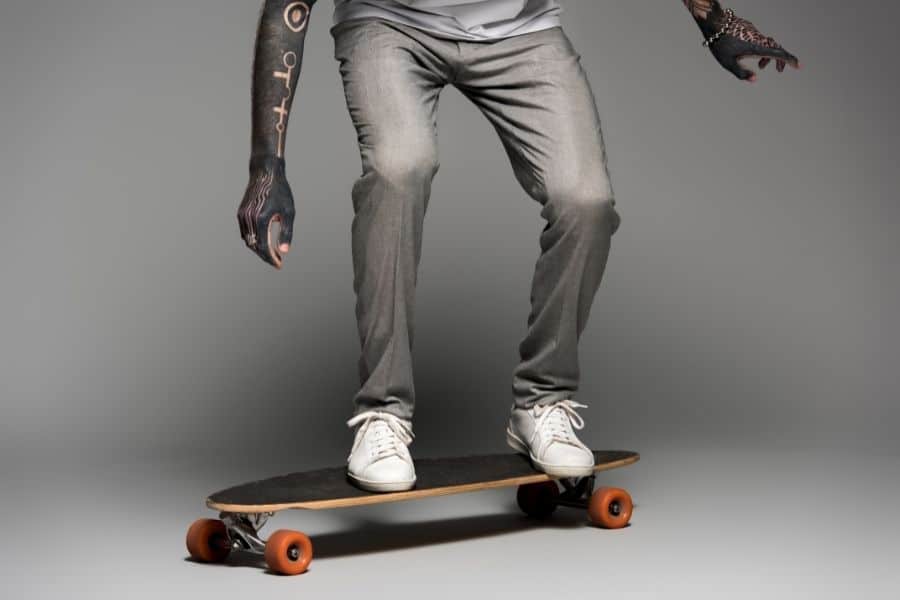
How Long it Takes to Learn to Skateboard
To learn the basics of skateboarding, begin with balance. This is key in learning to ride, do tricks, and maneuver a skateboard.
The best way to master maintaining balance is to practice on a safe, soft surface that won’t allow the wheels of your board to roll. This could be on your lawn or on a carpet inside your home.
Put your feet on the bolts that are on the top of the skateboard’s deck, and center your weight over the middle or center of the board.
Next, practice leaning and maintaining balance and your stance on the board. Practice bending toward the back and front of the board — the heel and toe — and continue this until you feel comfortable and confident.
Now try the same moves on a harder surface outside, like the pavement or patch of concrete.
Pushing
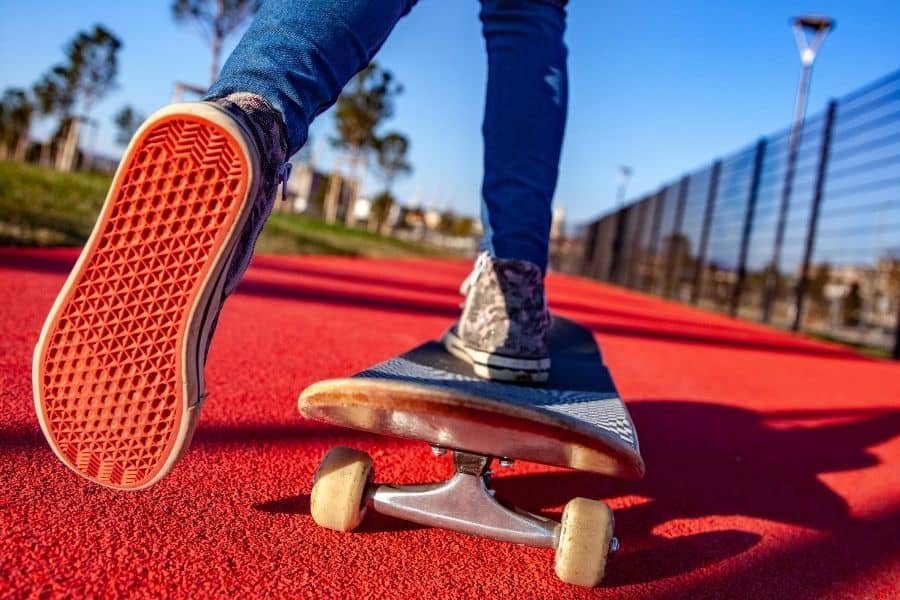
Pushing on Skateboard
Practice pushing next. Using your behind foot, push from the ground with your other foot — the pioneer foot — still on the bolts of the skateboard deck.
Don’t let your pushing foot get stuck behind the toe or tail of the board. Push towards the front after centering your weight.
Don’t worry — with plenty of practice, this will become a very instinctual and easier thing to do. Regular and frequent practice is key in becoming skilled and comfortable on a skateboard!
Carving
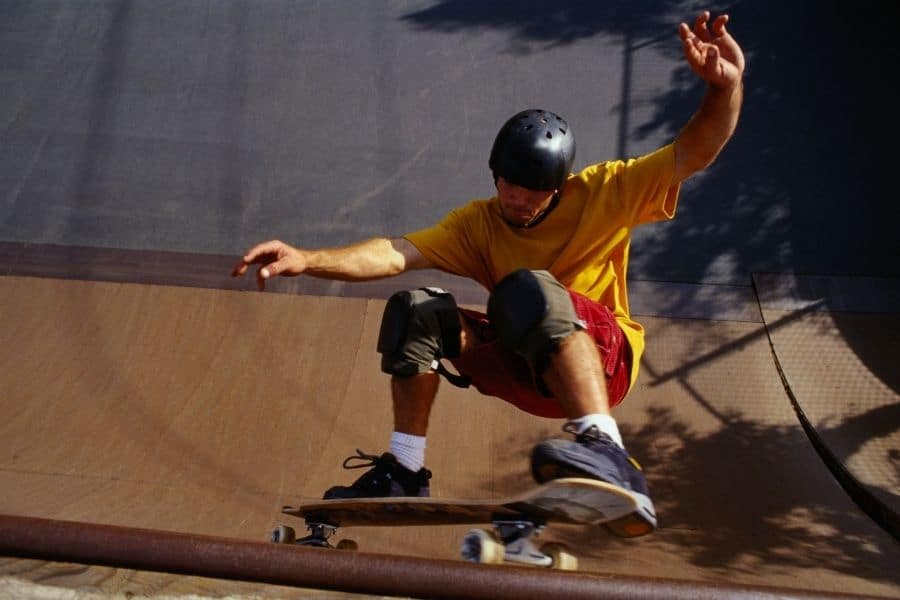
Carving on a Skateboard
Carving is another word for turning the direction of your skateboard. Shifting weight — like you do when practicing and maintaining balance — is how you learn to turn the skateboard in whichever direction you want to go.
When you feel confident about shifting your weight, try stooping and bending your knees a bit to help turn, similar to how you shift and bend to turn and change directions on a bike.
Carving — or turning — is another skateboarding skill that will become easier over time and that almost feels instinctual with practice.
Make sure that you are comfortable with carving before venturing out and skateboarding on public roads, sidewalks, or byways — anywhere that there is traffic and pedestrians.
Stopping
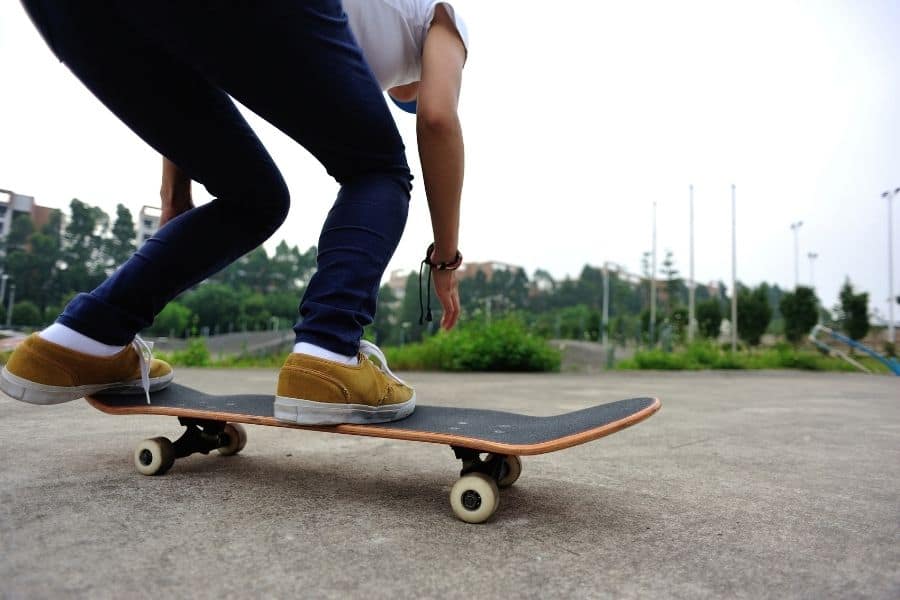
Skateboard Stopping
Stopping is perhaps the most important aspect of skateboarding for a beginner to learn! Learning how to move on a skateboard is one thing — but stopping is essential and key to practice regularly.
The easiest way to stop is to bend your knees, maintain your body centered on the board, and use your push foot to slow you down. However, if you need to make a stop in a hurry, it may be the safest approach to simply jump from the board altogether.
Be wary, however, of where the board will go and what is around you when stopping in this manner. The skateboard may go flying when you take your weight off of the deck.
Frequently Asked Questions about How Long It Takes to Learn to Skateboard
How long does it take for a beginner to learn to skateboard?
With regular practice, it can take no time! Some may pick up on the fundamentals of skateboarding as quickly as a day, while it may take other riders much longer. The key is plenty of practice! Remember, it can take a lifetime to hone and master your skateboard skills.
How big are the wheels of a skateboard?
Ideally, the wheels of your skateboard should be around 54 mm when learning to skateboard. This will help to provide support and stability for new skateboarders.
What’s the best frequency to get better at skateboarding?
Regular, albeit brief, practice sessions are more effective than longer practice periods infrequently. Regular practice’s the key to becoming an expert skateboarder. Vigilance will help develop muscle memory, which will make skateboarding and maintaining balance second nature and intuitive. Frequent repetition is key.
What’s the best way to practice balance when learning how to skateboard?
Practice balance by first starting on a surface that will prevent the wheels from rolling, like a rug or the grass. Next, stand with your feet on the deck’s bolts to center your weight and lean. Try learning toward the heel and then the toe of the board. Practice shifting your weight can help greatly with balance.
Conclusion
If you are thinking about learning the skateboard, remember the key is practice. Use these tips to gain some experience and expertise with the fundamentals- balance, pushing, carving, and stopping- and remember that mastering a skateboard is a lifelong skill that will require plenty of practice. Good luck!
